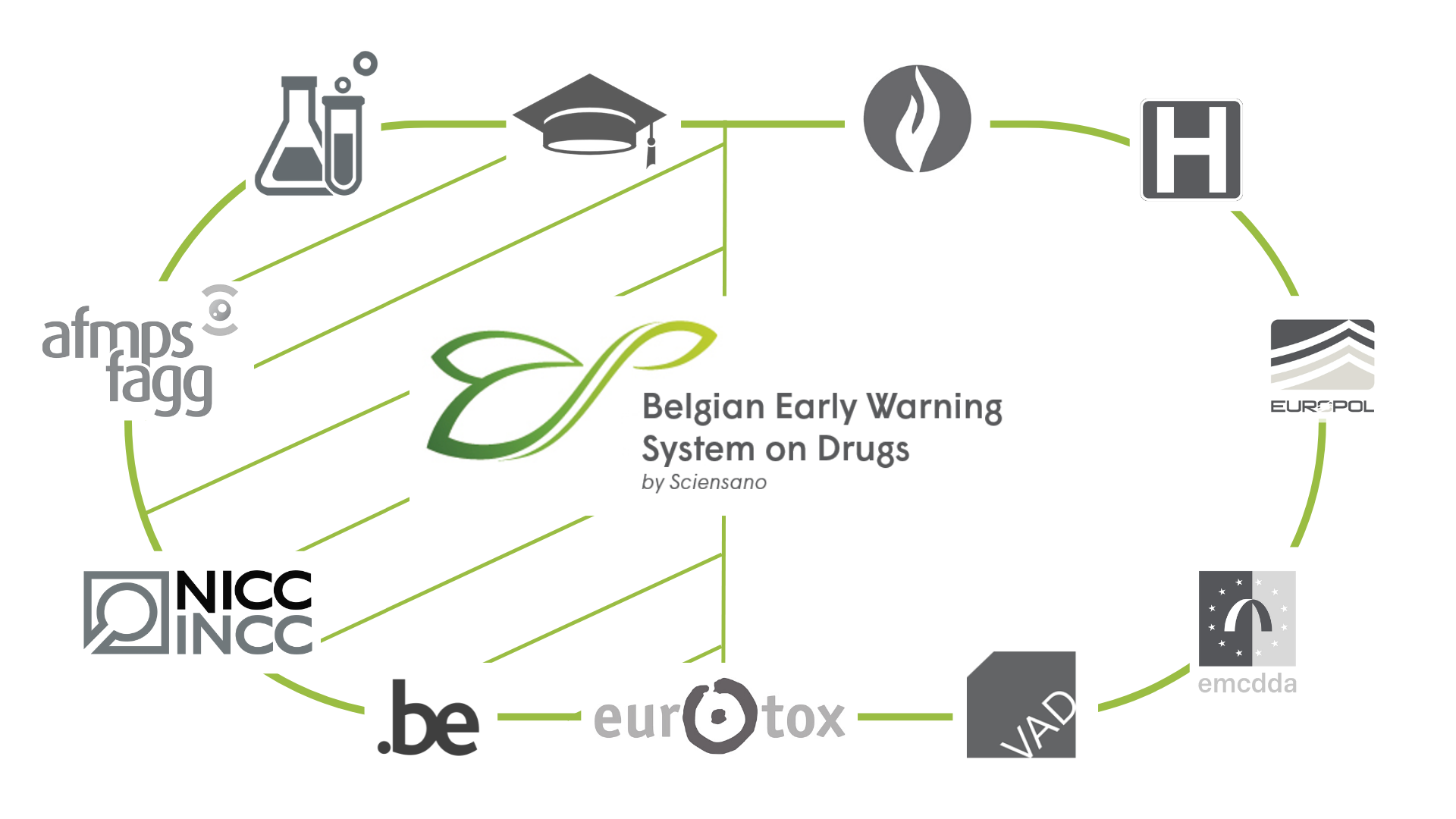Last updated on 14-12-2022 by Pierre Daubresse
Project duration:
-
June 16, 1997
Project with no end date
In short
The BEWSD is the national pillar of a greater European network monitoring emerging drugs and drug trends. Our findings are used to rapidly detect, assess and respond to potential public health risks, to support hospitals, laboratories, harm reduction services and policy makers in their tasks and to strengthen their awareness and preparedness towards drugs-related problems.
Project description
Through its working, the BEWSD provides:
- A key source of information: The BEWSD is a continuously running project of the Unit illicit drugs at Sciensano. It is an integral part of the European Early Warning system on Drugs and the result of the adoption of the Joint Action on New Synthetic Drugs (European Union, 1997) by the Belgian government. As such, the BEWSD is the Belgian actor in a European multidisciplinary surveillance network that includes the European Monitoring Centre for Drugs and Drug Addiction (EMCDDA), EUROPOL, the European Medicines Agency (EMA) and 29 national early warning systems.
- About drugs in Belgium: Our main objective is the identification of new psychoactive substances as they appear on the national market, as well as of emerging trends for more established illicit drugs (e.g. dangerous contaminants or cutting agents, increased levels of purity, etc.). In turn, these data are used to inform the relevant Belgian and European authorities, health institutions, prevention services, laboratories or other professionals. Dissemination of any findings to the wider public is reserved to those cases posing a significant threat to public health and would generally be provided by our regional partners Eurotox and VAD.
- By and for a unified network of experts: To fulfill our tasks, the BEWSD joins together a network of clinical and forensic toxicological laboratories in Belgium. Other valuable sources of input include Eurotox and VAD, police departments, harm reduction services, customs, FAHMP, etc., both at a national and EU level. We further try to resolve unanswered questions about identified substances through scientific collaborations with universities and other research organisations. The processed data is fed back to the network for use in their daily workings, stimulation of research projects or general knowledge exchange.

We kindly invite you to contact us for more information on the project!
Members of the press are asked to contact Sciensano’s media relations team.



